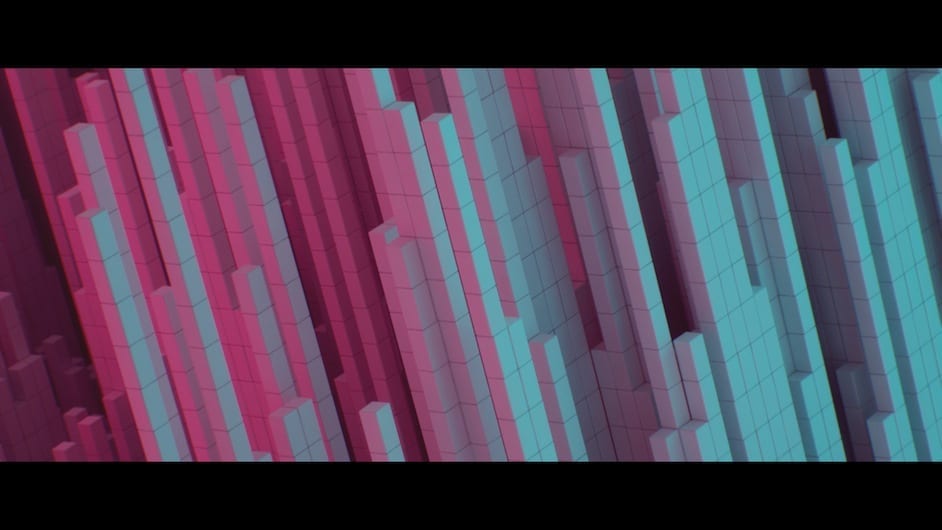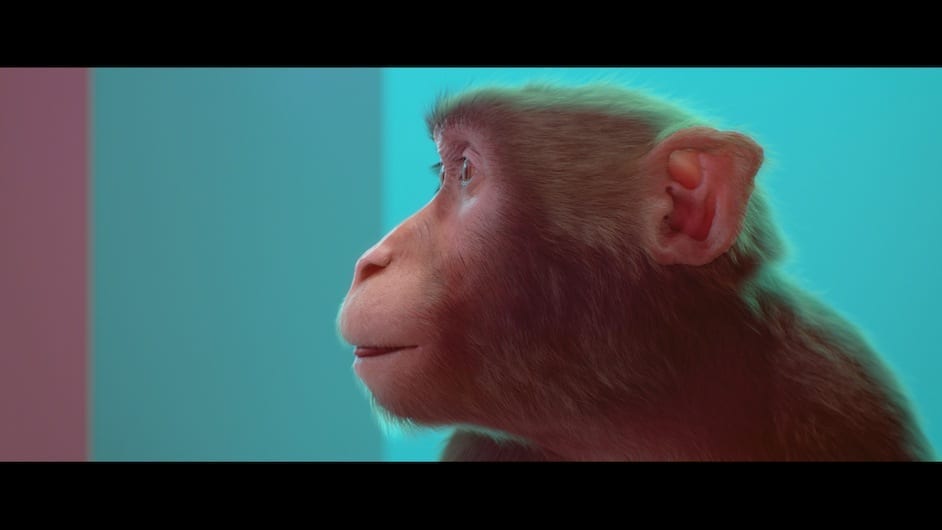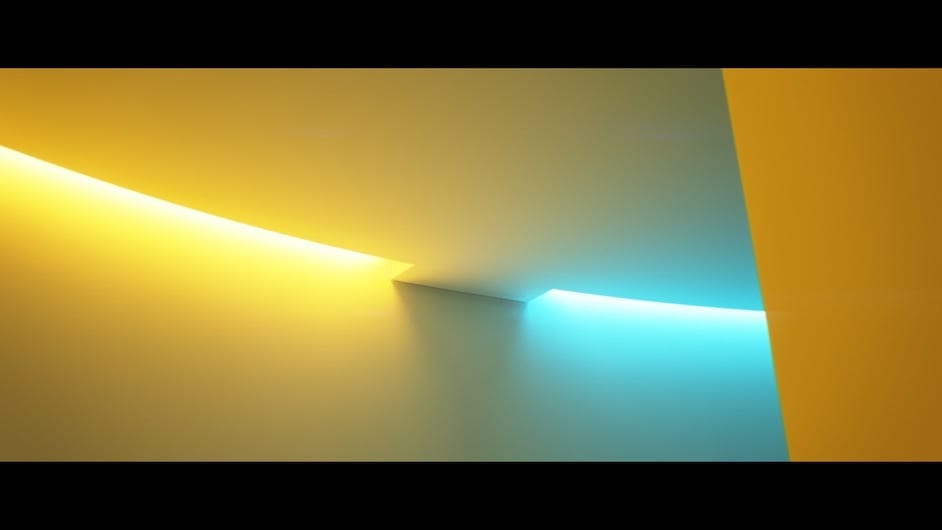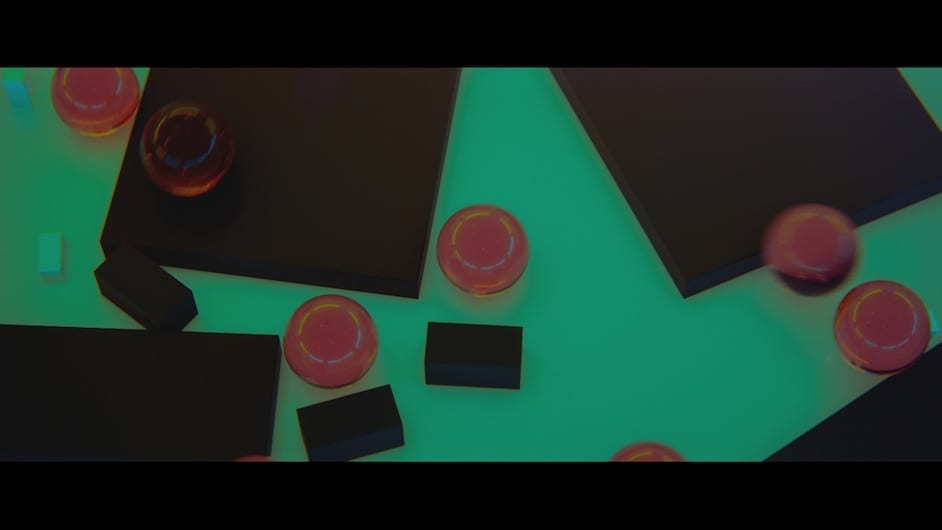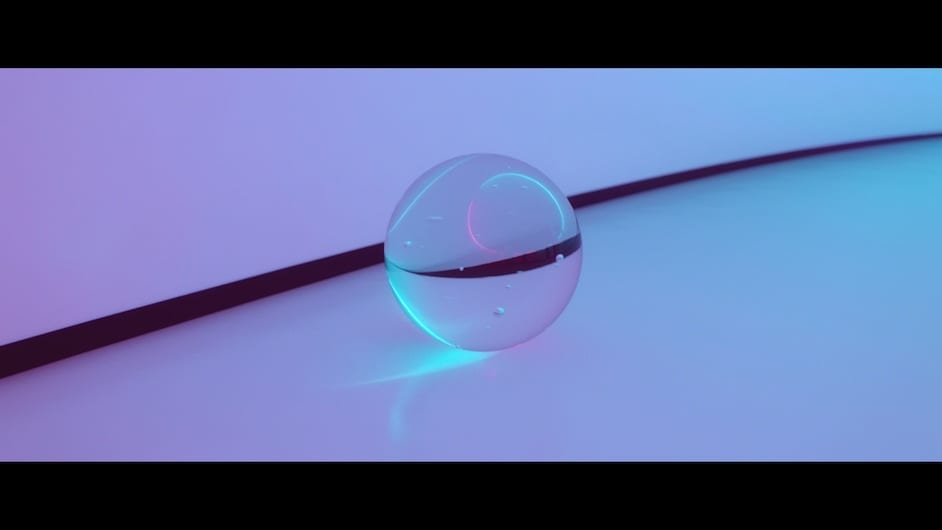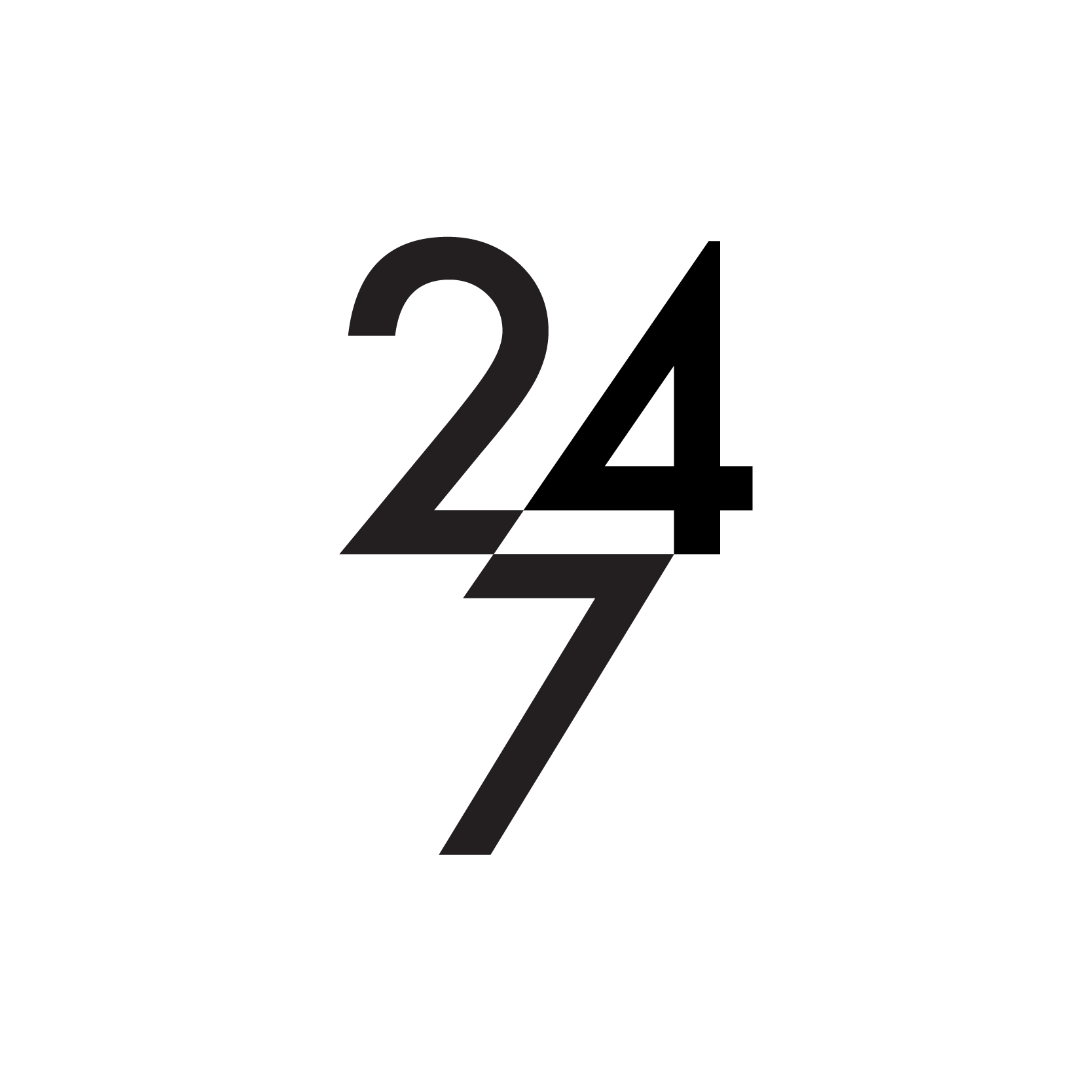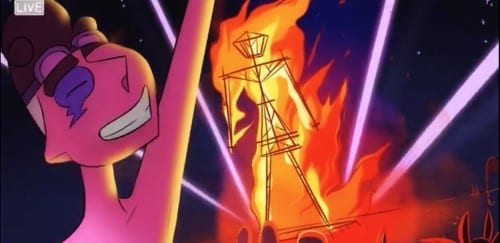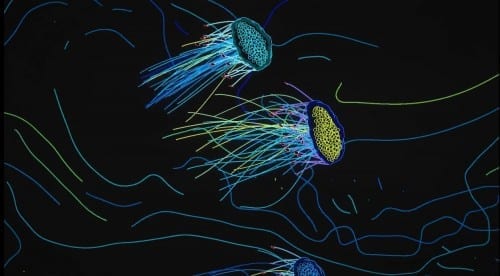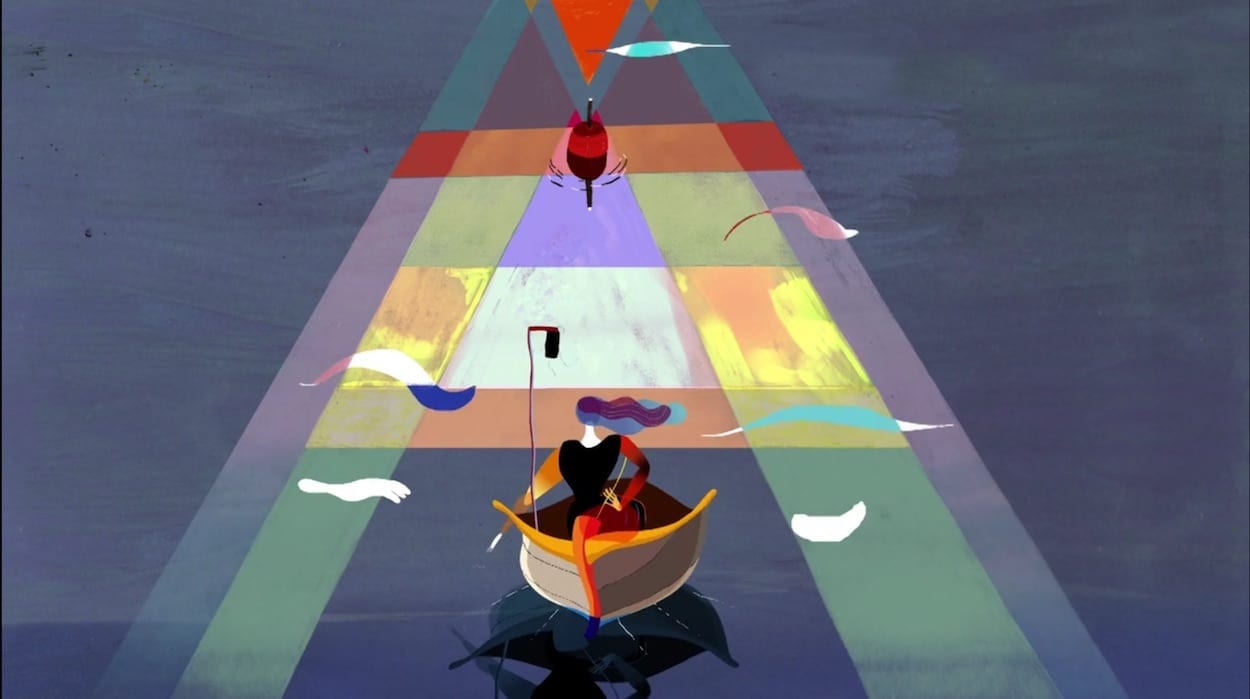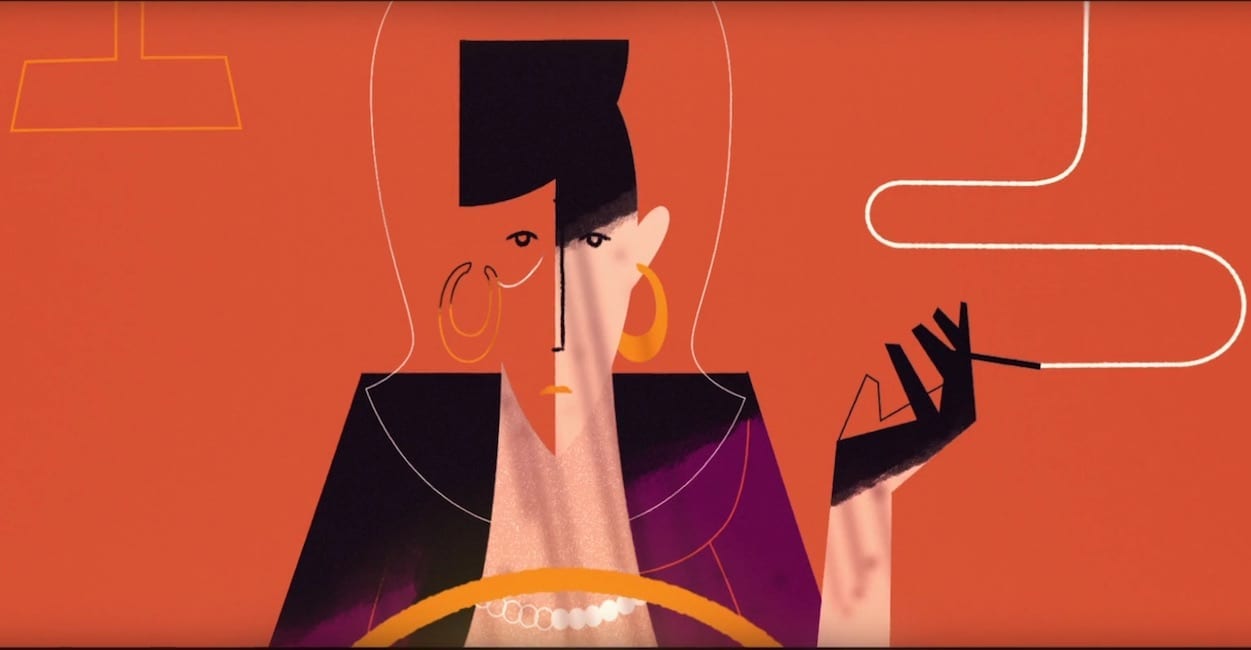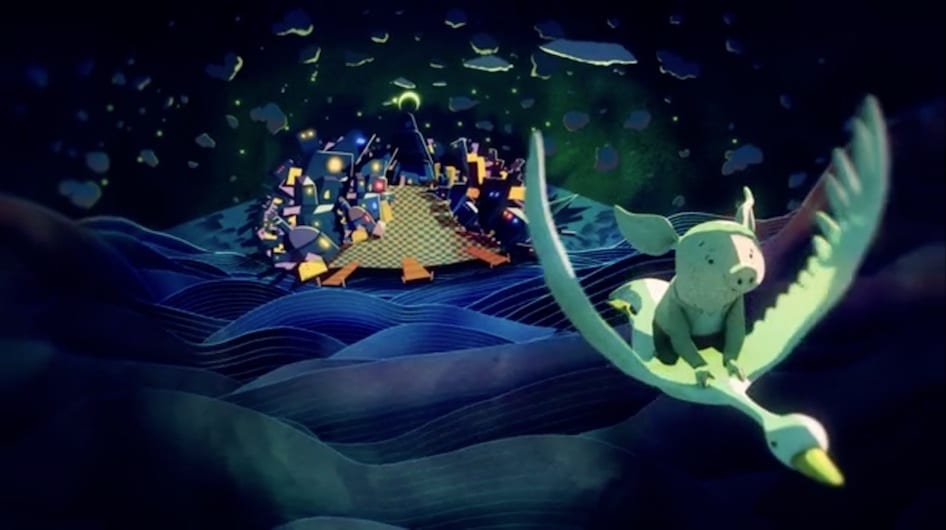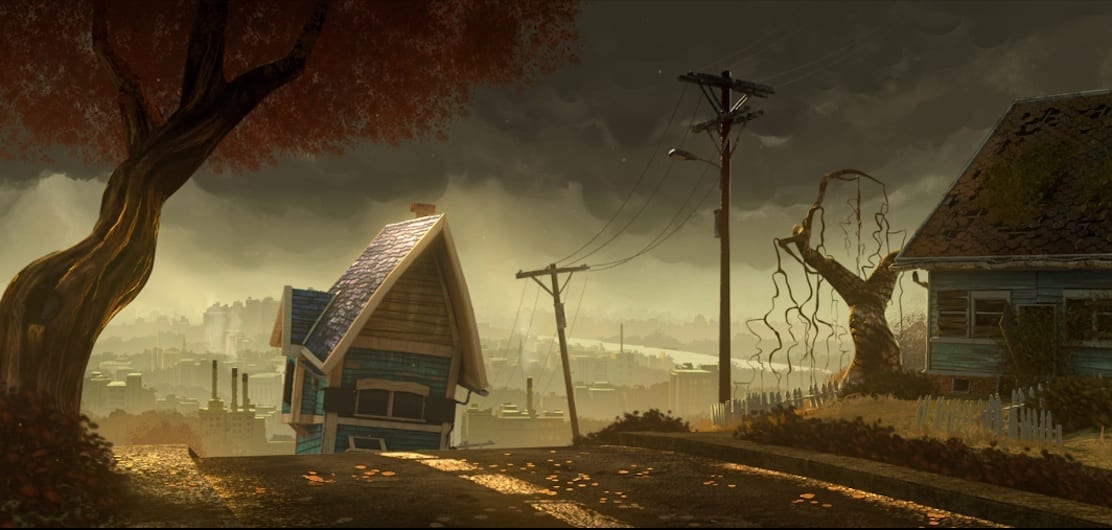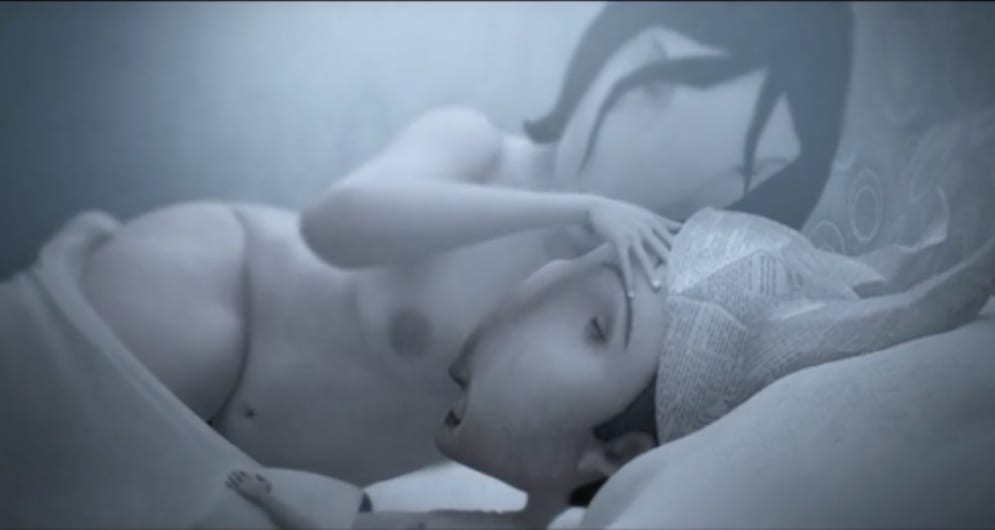When I watch old animations done by the likes of Oskar Fischinger or Norman McLaren from the 1930s, I often wonder what Synesthesic animations (animation done in rhythm with the music) would be like created with today’s techniques. Your short film answers this question perfectly. You also surprise by mixing hyper-realistic CG animation with animals, architecture, colours and shapes, framed sometimes like an abstract painting. What was your motivation to make this short film?
I think I always wanted to make a non-narrative film, without dialogue, a pure cinematic experience. The music, although by nature abstracted, is able to move and can even be a carrier of meaning. I dreamed of a film not figurative, which is purely graphic and capable of providing the same experience. I also wanted this film to be accessible to a large audience.
Can you explain quite simply what Synesthesia is?
Synesthesia is a neurological phenomenon in which one sense is simultaneously perceived as if by one or more additional senses. For example, someone who always sees a certain colour in response to a certain sound.
Do you see forms, lights and colour in your head when you listen to a music track as the Synesthetes people? What was your writing process for this narrative?
No, I am not synesthete. I am just interested by the idea of multi-sensory experience.
Why did you choose an animal and in particular a monkey to be in the middle of all this human geometric architectural world?
The presence of a character makes the film more accessible and can be seen as a metaphor of consciousness.
Throughout your film, the Steve Reich’s music seems written to illustrate perfectly a Synesthesic piece, was it important for you to be able to use it, and how did you succeed to contact Steve Reich to have the right to use it on your film?
The idea of this project was born when I first heard Music for 18 Musicians, which was 12 years ago. Reich’s minimalist aesthetic has been a revelation, a way to illustrate concepts such as complexity, self-organisation and emergence.
I requested the license from Steve Reich to use the music only after I finished the film. Although it was a risk not to request the music before, it was easier to explain why I wanted to use his music once the film was complete.
The three last shots seem to suggest that all these shapes and geometries are existing only in the monkey’s mind, is it how you personally see the story?
The monkey’s attitude can be seen as an illustration of stoicism.
Are you working on any other personal projects?
I am currently working on a new short film, very colourful again but with much more narrative this time.
Light Motif
Producer / Director / Editor / CG Supervisor: Frédéric Bonpapa
Music: Steve Reich - Music for 18 Musicians, Section II. Performed by Steve Reich and Musicians. Used by permission of Boosey & Hawkes UK Ltd.
Character Modeler: Eric Prebende
Character TD: Frédéric Bonpapa
Character Animators: Barthélémy Boirot, Frédéric Bonpapa, Mathilde Fabry, Romain Pamart
FX Animators: Olivier Barré, Frédéric Bonpapa, Jon Uriarte.
Shading / Lighting TD: Frédéric Bonpapa
Compositors: Frédéric Bonpapa, Jon Uriarte

